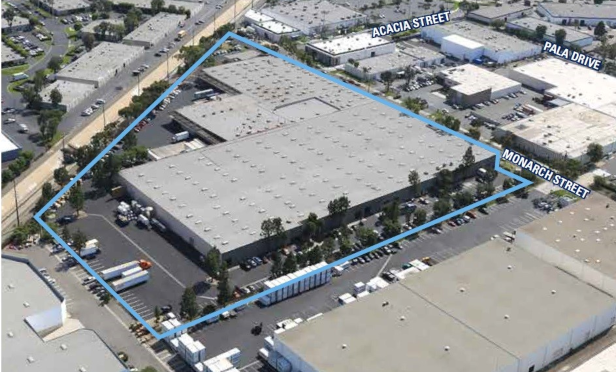 12752 to 12822 Monarch Street, an industrial asset Rexford Industrial purchased earlier this year
12752 to 12822 Monarch Street, an industrial asset Rexford Industrial purchased earlier this year
Rexford Industrial is confident that its portfolio well positioned to perform through to imminent downturn. The Los Angeles-based REIT focuses on small, infill industrial assets in Southern California, which have a history of outperforming big box assets during recessions. On the company's first quarter earnings call, leadership discussed the portfolio's strength to weather the COVID-19 storm.
"While on a global scale, one might expect larger tenants to be more resilient than the smaller tenants, however, it has been demonstrated that our infill markets have outperformed the big box, large tenant base located in non-infill market," Michael S. Frankel—co-CEO and director of Rexford Industrial, said on the call. "While this may seem counterintuitive, we believe the historical data paints a clear picture. It is very instructive to consider how our infill tenant base in Southern California performed during prior downturns as compared to large tenants located in non-infill market."
The REIT experienced strong performance during the last downturn as well. Vacancy in the infill market portfolio increased by 100 to 150 basis points, while product in the Inland Empire—a market dominated by large big-box users—increased by double or triple. "We believe the greater resilience of our infill SoCal tenants is due to two key factors," says Frankel. "First, it is due to the extreme scarcity of available products, exceptionally high barriers, limiting supply and a persistent supply demand imbalance. Additionally, the resilient nature of these entrepreneurial tenants is driven by the fact that our spaces generally represent mission-critical locations required for their businesses and to support their livelihood. It is also helpful to consider how today's crisis may be similar or different from prior downturns such as the great financial crisis and how that may impact our recovery within infill Southern California."
The dynamics of this recession will only help to drive tenant demand in infill markets, unlike the Great Recession. "Our tenant demand recovery through the great financial crisis was constrained by a lack of bank financing needed to fuel growth," Frankel says. "Today's crisis is health-related and driven by government-mandated shutdown. The banking system remains intact and able to provide working capital as demand recovers. Consequently, there may be reason to believe that recovery within our tenant base could be faster and more robust this cycle as compared to the prior cycle."
First quarter performance was underscored the investor's strength entering the crisis. Frankel's quarter one highlights of performance included: increasing company share of core FFO by 28% to $37.5 million and generating a 10% increase in core FFO per share to $0.33; growing NOI by 3.7% on a GAAP basis and by 7.5% on a cash basis; achieving 98% occupancy in the company's stabilized same-property portfolio; and signing 107 leases for 1.6 billion square feet with leasing spreads at 36.6% on a GAAP basis and 24.4% on a cash basis. In addition, Rexford purchased a 10-property portfolio for $203 million, and year-to-date investment volume is approximately $219 million.
As the company heads into the second quarter, it anticipates healthy demand from ecommerce-related tenants. "We continue to see substantial incremental demand, driven by e-commerce and other distribution-oriented tenants such as Amazon, among others," says Frankel. "In addition, businesses from other growing sectors of the economy continue to demand space in a market with the nation's lowest level of available supply."
© Touchpoint Markets, All Rights Reserved. Request academic re-use from www.copyright.com. All other uses, submit a request to [email protected]. For more inforrmation visit Asset & Logo Licensing.






